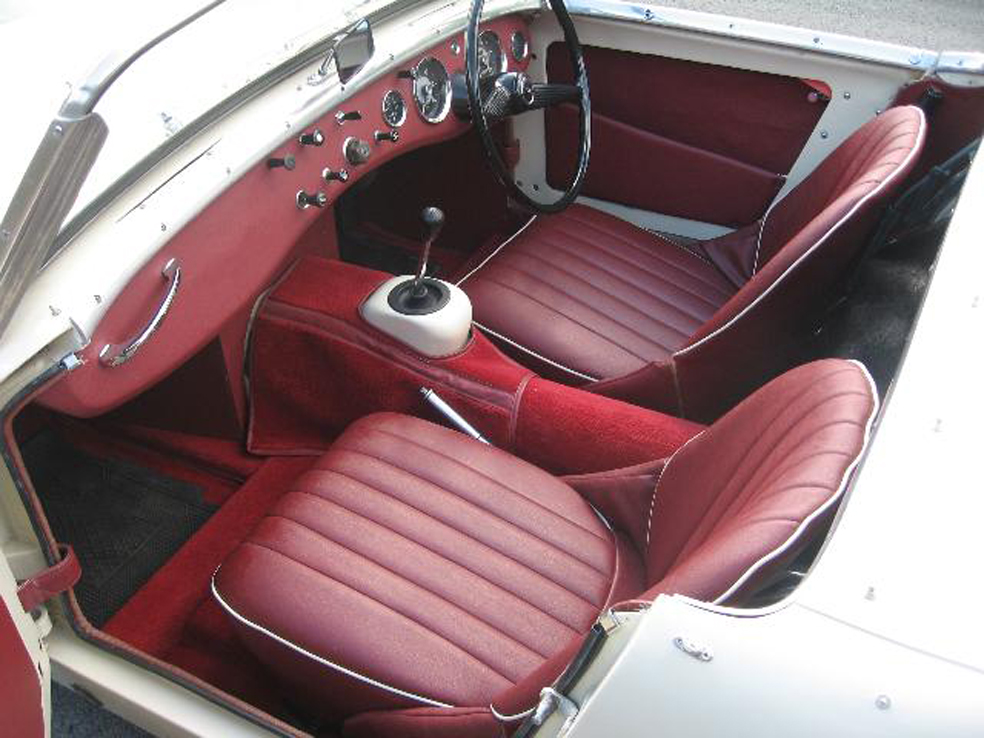The Sprite was small in size but big in fun, says JULES CHRISTIAN.
The late 1950s and 60s were the era of the real British sports car. The heavyweights of the day were the likes of the Jaguar XK150, Triumph TR4A, Sunbeam Tiger, Austin Healey 3ltr and the ‘new’ E-type. The mid-range selection including the MGB, Sunbeam Alpine, Lotus Elite, to name but a few. This left an untapped market for a small, inexpensive convertible that basically got your head out in the open air, was cheap to run, and was simply fun.
It was a time of change, and Austin Healey, which was the combination of the British Motor Company (BMC) and the John Healey Motor Company, decided to do just that, and designed the Sprite. The car was introduced to fill that gap in the lower end of the market and was revealed to the press in 1958 as a budget model that “a chap could keep in his bike shed”.

At first look the Sprite seemed to be a bit of a ‘bitzer’, using parts and technology from an assortment of cars: the engine was basically the one used in the Morris 1000, as was the rack and pinion steering, whereas the rear suspension was derived from no less than the Jaguar D-type. The famous “frogeye” headlights were originally designed to be pop-up but, as the whole car was a cost cutting exercise, they were finally left sitting on top of the bonnet.
The original performance was not exactly riveting. The 948cc, four-cylinder engine, boosted from the original by twin SU carbs, produced 43bhp and gave the Sprite a 0-100km/h time of 20.5secs and a top speed of just 134kph. Remembering that it was an economy model, the fuel consumption was excellent in its day at 43mpg.
When I said economy, I was not joking. Cost-cutting involved no boot lid – you had to tilt the seats forward and access the boot area from inside the car. There were no exterior door handles – the doors only opened from the inside (this didn’t matter because you had no wind-up windows, they were just sliding plastic and detachable) and no bonnet, with the whole of the front of the front of the car just hinging back. This was like the E-type, but attached at the bulkhead not the front – for access it was a mechanic’s dream come true. Moreover, the soft top was positively primeval and did very little to stop you getting soaked when it rained.

Economised it may have been, but you did get carpets and snazzy body coloured piping on the seats and the strange thing is – it worked. In fact it worked very well indeed. Modified factory versions won major racing successes in their class and the low cost and practicality of the car meant that many privateers could afford to enter competitions. And, most importantly, the general public loved it.
The Mark II came out in 1961 with a big change in body style. The frogeye headlamps were moved to the side wings (not popular with the original enthusiasts), a rear bumper was added and there was now a boot lid. By 1962 an alternative version was available using the MG marque, badged as the MG Midget, which proved even more popular than the Sprite. The performance was enhanced with a larger 1098cc engine and, carrying on in true ‘bitzer’ tradition, even introduced Porsche synchromesh to the gearbox.
Competition from the, then new, Triumph Spitfire in 1964 brought about the next upgrades for the Sprite and Midget. The engine power was now up to a more respectable 59bhp and the rear suspension modified, the addition of a curved windscreen, quarter-lights, improved interior trim, external door handles, and wind-up windows further enhanced the Spriget. The performance was later increased again with a new 1275cc engine producing 65bhp, the brakes were improved, and alloy wheels would also become an option.

By far the biggest step forward, however, to many a damp owner, was the soft top finally being sorted out. Previously it had been a ramshackle affair that you took apart and then shoved the pieces in the boot, which like socks in a washing machine, one always went mysteriously missing, meaning it would never reassemble properly. The new one had a permanently fixed folding hood, which didn’t leak (well almost).
Although the Midget version would continue in production until 1980 under the ownership of British Leyland, the Sprite was discontinued in 1971. This was because BMC, by then British Leyland, were undertaking cost-cutting themselves and severed their link with originators of the car, the Donald Healey Motor Company, in order to avoid paying royalties.
My own fond memories were the absolute joy of my first ever trip in an open sports car, driven by my elder half-brother – a brand new, bright red, Austin Healey Frog Eye Sprite. Fun indeed.











